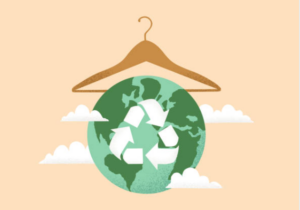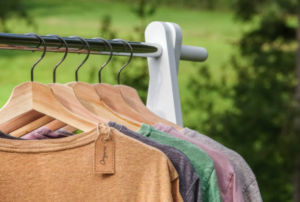The Beauty Industry’s Role in Environmental Advocacy

In the era of fast fashion and disposable consumer culture, the beauty industry stands at a crossroads. With increasing awareness of environmental issues and the detrimental impact of unsustainable practices, consumers are demanding change. From the sourcing of ingredients to packaging and distribution, every aspect of the beauty industry has the potential to contribute to environmental degradation or environmental advocacy. In this blog, we’ll explore the transition from fast fashion to sustainable style within the beauty industry, examining the current landscape, challenges, and opportunities for environmental advocacy.
The Current State of the Beauty Industry
The beauty industry relies heavily on a wide range of ingredients sourced from around the world. However, the sourcing of these ingredients often comes with significant environmental and social consequences. For example, the extraction of palm oil, a common ingredient found in cosmetics and skincare products, has been linked to deforestation, habitat destruction, and the displacement of indigenous communities in regions such as Southeast Asia and South America.
Similarly, the demand for certain natural ingredients, such as shea butter and argan oil, has led to overharvesting and depletion of natural resources in their native habitats. Unsustainable farming practices, including the use of chemical pesticides and fertilizers, further exacerbate environmental degradation and contribute to soil erosion and water pollution.
Furthermore, the beauty industry’s reliance on animal-derived ingredients, such as lanolin and collagen, raises ethical concerns regarding animal welfare and biodiversity conservation. The use of animal testing in cosmetics development also remains a contentious issue, despite growing consumer demand for cruelty-free alternatives.
Packaging represents another significant environmental challenge within the beauty industry. Single-use plastic packaging, including bottles, jars, and tubes, is ubiquitous in the beauty aisle and contributes to the global plastic pollution crisis. According to the United Nations Environment Programme, around 120 billion units of packaging are produced by the global cosmetics industry every year, much of which ends up in landfills or the ocean.
Moreover, many beauty products are packaged in non-recyclable or difficult-to-recycle materials, such as mixed plastics and multi-layered packaging. As a result, the recycling rate for beauty packaging remains low, with only a fraction of products being properly recycled or repurposed.
Despite these challenges, there is growing consumer awareness and demand for sustainable and ethical beauty products. Millennials and Gen Z, in particular, are driving this shift towards more conscious consumption, prioritizing brands that align with their values of sustainability, transparency, and social responsibility.
According to a report by McKinsey & Company, 66% of consumers globally are willing to pay more for sustainable brands, indicating a significant market opportunity for beauty companies that prioritize sustainability. This trend is further reinforced by the rise of social media influencers and beauty bloggers who advocate for eco-friendly and cruelty-free products, amplifying consumer demand and shaping industry norms.
Furthermore, the COVID-19 pandemic has accelerated the shift towards online shopping and digital beauty experiences, providing an opportunity for brands to engage with consumers in new ways and communicate their sustainability initiatives more effectively.
In response to these changing consumer preferences, many beauty brands are increasingly incorporating sustainability into their brand identity and product offerings. From launching refillable and zero-waste products to adopting eco-friendly packaging and investing in renewable energy, companies are taking steps to reduce their environmental footprint and meet the growing demand for sustainable beauty options.
However, challenges remain in scaling up these sustainability initiatives and ensuring meaningful impact across the entire beauty industry. Collaboration between brands, suppliers, policymakers, and civil society will be essential to drive systemic change and transition towards a more sustainable and ethical beauty industry.

The Role of Environmental Advocacy
Environmental advocacy plays a crucial role in shaping the beauty industry’s response to environmental challenges and driving innovation towards more sustainable practices. Beauty brands have the opportunity to become agents of change by advocating for environmental stewardship, promoting transparency, and engaging with stakeholders to address key sustainability issues.
- Sustainable Sourcing Initiatives:
Many beauty brands are taking proactive steps to ensure the responsible sourcing of ingredients and raw materials. This includes partnering with suppliers who adhere to sustainable farming practices, such as organic cultivation, fair trade certification, and biodiversity conservation. By prioritizing ethical sourcing, brands can support local communities, protect ecosystems, and reduce their environmental impact.
For example, some beauty companies have established supply chain traceability programs to track the origins of key ingredients, ensuring transparency and accountability throughout the production process. Others have implemented sustainable sourcing policies that prioritize suppliers with certified sustainable practices, such as Rainforest Alliance or Fairtrade certification.
Additionally, brands are increasingly investing in regenerative agriculture initiatives aimed at restoring degraded land, sequestering carbon, and promoting soil health. By supporting regenerative farming practices, beauty companies can contribute to climate resilience, biodiversity conservation, and rural livelihoods.
- Eco-Friendly Packaging Solutions:
In response to growing concerns about plastic pollution and waste, many beauty brands are innovating new packaging solutions that prioritize sustainability and circularity. This includes using recycled materials, such as post-consumer recycled plastic (PCR), glass, aluminum, and bio-based plastics derived from renewable sources.
Furthermore, brands are exploring alternative packaging formats, such as refillable containers, compostable packaging, and packaging-free options, to minimize the environmental impact of their products. By embracing these eco-friendly packaging solutions, beauty companies can reduce their reliance on virgin plastics, lower their carbon footprint, and contribute to a more circular economy.
Some brands have also launched take-back programs and recycling initiatives to encourage consumers to return empty packaging for reuse or recycling. By closing the loop on packaging materials, brands can extend the lifespan of resources and reduce the amount of waste sent to landfill or incineration.
- Advocacy for Regulatory Reform:
In addition to internal initiatives, beauty brands can advocate for regulatory reform to address systemic barriers to sustainability and promote industry-wide change. This includes advocating for policies that prioritize environmental protection, ban harmful ingredients, and incentivize sustainable practices.
For example, some brands have supported campaigns to ban microplastics and other harmful chemicals from personal care products, leading to legislative action in various jurisdictions. Others have advocated for extended producer responsibility (EPR) schemes that hold manufacturers accountable for the end-of-life management of their products and packaging.
Furthermore, beauty brands can leverage their influence to advocate for greater transparency and disclosure of ingredients, production practices, and environmental impacts. By advocating for mandatory reporting requirements and standardized labeling, brands can empower consumers to make informed choices and hold companies accountable for their environmental performance.
- Collaboration and Partnerships:
Collaboration and partnerships are essential for driving collective action and scaling up sustainability initiatives within the beauty industry. Beauty brands can collaborate with suppliers, industry associations, NGOs, and other stakeholders to share best practices, leverage resources, and amplify impact.
For example, some brands have joined industry coalitions and multi-stakeholder initiatives focused on sustainability, such as the Sustainable Beauty Coalition or the Beauty Made Better initiative. These platforms provide a forum for collaboration, knowledge exchange, and collective advocacy on key sustainability issues.
Furthermore, brands can partner with NGOs and advocacy organizations to support environmental conservation projects, raise awareness about pressing issues, and mobilize consumers for collective action. By aligning with trusted partners and leveraging their expertise, brands can maximize their impact and drive positive change across the beauty industry and beyond.

Challenges and Opportunities
While progress has been made, there are still many challenges facing the beauty industry on the path to sustainability. One of the biggest challenges is the cost of sustainable practices. Eco-friendly ingredients and packaging materials can be more expensive than their conventional counterparts, making it difficult for smaller brands to compete with larger companies. However, as consumer demand for sustainable products continues to grow, economies of scale may help drive down costs over time.
Another challenge is the lack of regulation and standardization within the beauty industry. Unlike other sectors, such as food or textiles, there are few regulations governing the use of environmentally harmful ingredients or packaging materials in beauty products. This lack of oversight can make it difficult for consumers to make informed choices and for companies to differentiate themselves based on sustainability.
Despite these challenges, there are also many opportunities for innovation and collaboration within the beauty industry. Advances in technology and materials science are opening up new possibilities for sustainable packaging and ingredient sourcing. Collaborations between brands, suppliers, and NGOs can help drive progress towards shared sustainability goals.

The beauty industry plays a significant role in shaping consumer attitudes and behaviors towards the environment. By embracing sustainability and environmental advocacy, beauty brands have the opportunity to not only reduce their environmental footprint but also to inspire positive change across the industry and beyond. From sourcing ingredients responsibly to using eco-friendly packaging, there are many ways that beauty companies can contribute to a more sustainable future. As consumers, we have the power to drive this change by supporting brands that share our values and holding companies accountable for their environmental impact. Together, we can move from fast fashion to sustainable style and create a beauty industry that values people, planet, and profit equally.




